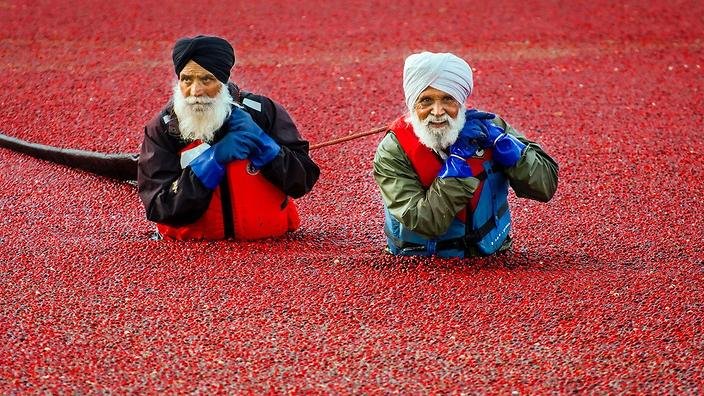
Ever wondered where Cranberries come from? Read on to find out about the fascinating wet harvesting technique and also check out the beautiful pictures of wet harvest.
17 Feb 2016: The cranberry plant is a perennial evergreen vine that is related to the blueberry. Every autumn, in North America and Canada, Cranberries reach their peak of colour and flavour and are ready for harvesting.
Cranberry is a bog plant. That is why many people believe cranberries grow under water. Which makes sense. Bogs fall into the wetland category and play an important role in biodiversity. It’s an area of soft, marshy ground with acid peat soil, usually near wetlands and that’s where the Cranberries grow on long-running vines.
While good supply of water is important for the successful cultivation of cranberries, they don’t actually grow in it. In fact a good drainage of soil is required for the growing season.
But when it comes to harvesting cranberries, that’s when water and flooding comes in to play which is also called Wet Harvest. The night before harvesting the cranberries, the bog is flooded to up to 18 inches with water. The growers then use special cranberry harvesting machines, also known as “eggbeaters” that are driven through the bed to churn the water and loosen the cranberries from the vines. The machinery used is light weight and has balloon tyres so that the plants are not damaged.
Cranberries have little pockets of air in them that allow them to float on the surface of water. Floating booms are used to coral the cranberries to a collecting point from where they are loaded into trucks and taken to be dried and sorted by hand. The wet harvesting of these berries makes for a beautiful sight!
Anton Bieousov
These cranberries are of course the ones that are used to make products from, for example, jams, sauce and juices etc.
The fresh cranberries that you buy from the supermarket aisle are harvested using the dry method.
For this, the growers use mechanical pickers that look like large lawnmowers. They have metal teeth that comb the berries off the vines and deposit them in a burlap sack.
